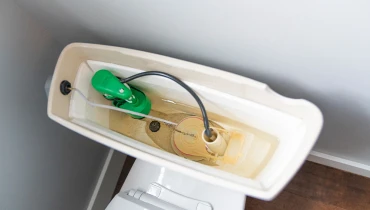Call This Monday to Get $50 Off
Schedule a Local Plumber in Morgantown Area - Call us Now to Get $35 OFF.
4.8 / 5 Ratings based on 794 reviews Great Plumbers, Great Reviews
Call This Monday to Get $50 Off
Schedule a Local Plumber in Morgantown Area - Call us Now to Get $35 OFF.

Have you ever lifted the lid of your toilet tank and wondered what all those parts do? Understanding the inner workings of your toilet tank can be more essential than you think. Each piece plays a vital role in making sure that your toilet functions correctly every time you flush. Knowledge is power, and by understanding the mechanics inside your toilet tank, you can quickly identify and resolve issues before they escalate. Keep reading to learn how the different components inside your toilet tank function and how to keep them in great condition. And if you ever find yourself with toilet troubles, reach out to Mr. Rooter Plumbing. Our specialists are here to tackle any plumbing challenges you may have from a toilet repair to an emergency plumbing service.
It might surprise you to find that the interior of your toilet tank is a hub of components working seamlessly together. Here's what you'll find inside:
Flushing a toilet might seem straightforward, but it’s actually a fascinating series of events that ensures waste and toilet paper are disposed of efficiently. Here's the breakdown:
After the flush is complete, the tank must be refilled to be ready for the next use. Here's how that cycle is accomplished:
Your toilet tank is a marvel of modern engineering designed to make your life easier. However, if one piece stops doing its job, it can make your daily life a headache. If you’re experiencing issues with your toilet, it’s important to seek help from a qualified plumber. Call Mr. Rooter Plumbing to get the quality care you need. Our professionals have the experience and equipment needed to handle any issue. Contact our office for more details or to schedule an appointment for your next toilet repair or plumbing service.
Why You Should Have a Tankless Water Heater Hot water is one…
Read More+Common Water Heater Problems and How to Fix Them Water heaters are…
Read More+Water in Your Shower Not Hot Enough? Everyone deserves a nice hot…
Read More+